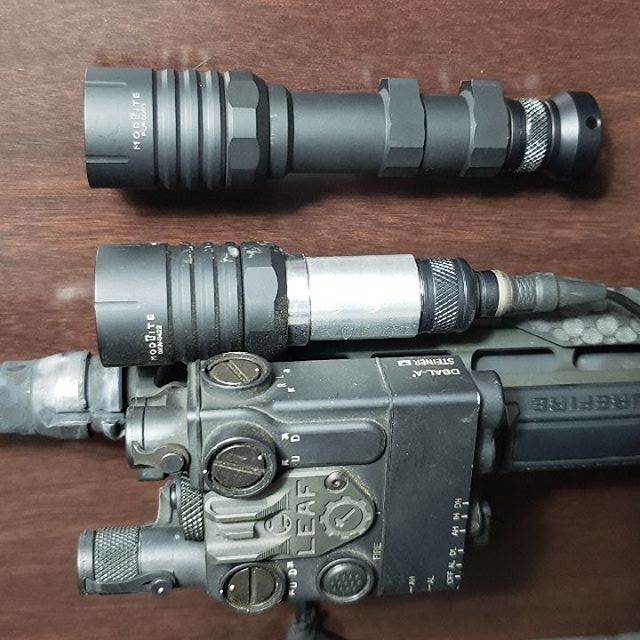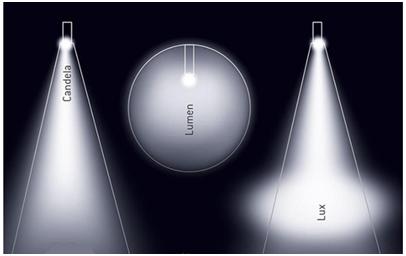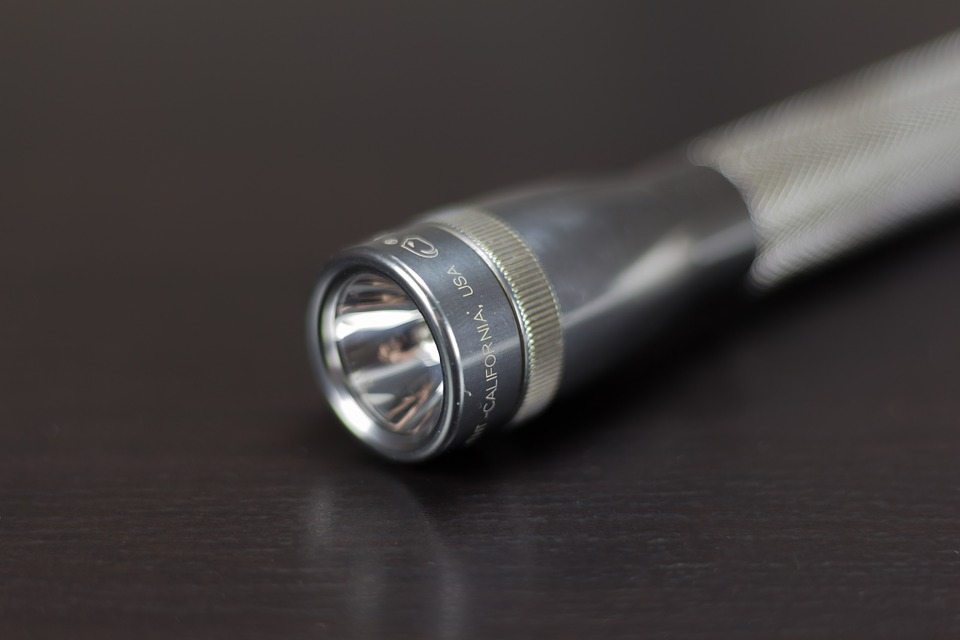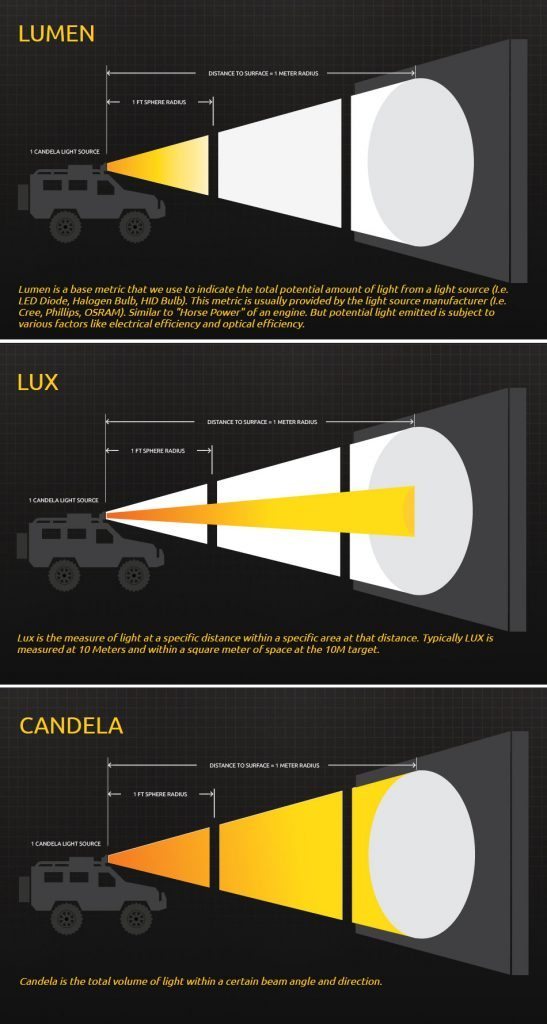It’s no longer an argument that part of your Every Day Carry (EDC), kit, or duty gear, should be a quality flashlight. Because sun doesn’t always wait for you to get home, bad guys don’t just party on banker’s hours, and a lot of places you might find yourself in rarely have a maintenance department. But while some think that having the brightest flashlight will make it the best, and having it fit in your pen pocket even more so, there may be some more things to consider.
First, let’s figure out what “brightest” means. Crack open any gear whore catalogue or swing by your local hardware store, and you are sure to find several pretty “tactical” models which scream lumens. 200, 300, 400… The more the better right? Accompanied on the box is probably a picture of the beam, and how effective it is, along with an exposed “try me” button, which is sure to bring out the kid in anyone. But while brighter is not necessarily better, what does the number of lumens truly describe?
Lumens, as opposed to Candela or candlepower, and Lux – a less frequently used unit of measure, is a measure of the total amount of light emitted by a light source. Kind of like horsepower for an engine. It is actually a quite generic measure, because it isn’t compared to a single, calibrated unit of reference. Household lighting devices and lightbulbs use lumens to describe the output, as well as dedicated tactical light sources. A Candela would be a better descriptor of a flashlight, especially one used as a primary EDC tool. It measures how bright a light source is, in reference to how far it can be seen.
Thinking of it in gearhead terms, it would be more like torque. One candela of measurement is about one candle of light. This intensity in theory doesn’t change even when the light is obstructed, and is seen in the same intensity from any direction, of the same distance. Meaning looking at the candle light source from any angle at 20 feet, should look just as bright. So candela is not only more descriptive, it is a truer measurement of light’s performance. Candela also refers to a focused beam measurement, while lumens – the total amount of light disbursed. Lux is a measurement of amount of light on a given surface, per specific surface area.
So that measurement is subjective to the area you are trying to eliminate. If it still seems confusing, the bottom line is this: compare lumens to lumens, and candela to candela. If you’re comparing two different products and they are described in different measurements of light, contact the manufacturer or do your own conversion. There are conversion tables readily available in the interwebs.
A reputable distributor or manufacturer should be able to provide a consistent point of comparison as well. This is specifically useful when deciding what you will need that flashlight for. Area illumination is better suited for lumen measurements, because it refers to a total amount of light out there. Like a flood light. Candela is preferred to a focused beam, like a spotlight. So one might be useful for searching fields or clearing rooms, while the other for weapon-mounted lights and individual target illumination.
Aside from differentiating the actual units of measurement, more of anything is not necessarily better. One reason is that you can only see so much at one time, and lighting up an area larger than your mind and reaction space can process, can be counterproductive. It also has a possibility of giving away your position in certain structures or spaces or backlighting someone you want to keep stealthy. Searching a room in a home may require you to light up that room, but there is no need for rays of your light to beam through the slits in the wood onto the street. Keep your personality for that, once you find the bad guy.
There are some additional options to consider when making an investment. And in my opinion, owning a solid and reliable flashlight should be nothing less. Every time I chose price and appearance of a flashlight over historic reliability, the product failed. I am not saying go on the brand name alone, but the manufacturers which have proven their worth, whether new or established, offer better warranty, customer service, and of course – performance.
In this equipment category, two is one – one is none, is truly a functional necessity. Whether you have rechargeable or replaceable battery or a spare light bulb, chances are at some point when you need a working primary light, issues come up, and you will need a back-up. It gets pretty irritating to your team mates when your gear, especially a frequently used item like a flashlight, is always in loaner mode.
There is some discussion about whether one style of battery is better than the other. I have heard that a rechargeable battery will just cut out during use, while a replaceable one may give you a few dims before doing so. I have actually seen the opposite, and don’t believe that there is one rule for any aspect of related technology. Unless you charge to 100% or replace your batteries before every mission, you need a back-up light.
Test your light before heading out the door, it will save a headache later. Other options include adjustable dial to focus the beam in different ways, strobe it, and different types of bulbs. Some lights have a certain number of clicks with the on switch to gain a specific mode of lighting.
While the ability to adjust a light beam may be beneficial during article searches, rescue operations and alike, the reality of high threat or dynamic encounters will not allow to use this option on the fly. Same with 3 clicks for high intensity, five for low, and tap-hold-tap Morse code combos for strobe.
Most people I know prefer not to use those fine motor skills and directions under stress. It is usually difficult to practice a drill which involves these adjustments to perfection with the majority of technology.
Meret USA does make a grip-integrated switch, which is very instinctive to use and does not require moving your hands off the weapon. Absent an option like this, I would prefer to figure out what is the one setting you most desire, and stick with that.
There are also a variety of bulbs which effect how a flashlight performs. In facts, several upgrades to lenses and light bulbs have come out in recent years, which literally transform certain flashlights into more modern and truly functional torches. These upgrades are typically under $20, but you should research both the seller, and the manufacturer.
Not the least of having a good flashlight, is knowing how to use it. Since weapon-related applications and every day carry needs dictate a lot of this use, good training is always key. One of the best, if not the best low light instructors I have had was Nick Kolkot, then with Strategos International. If you trust your light for a living, I would highly recommend you discover him, or other proven instructors out there. Shine on.




